Japanese ATMs: Show Me The (My) Money!
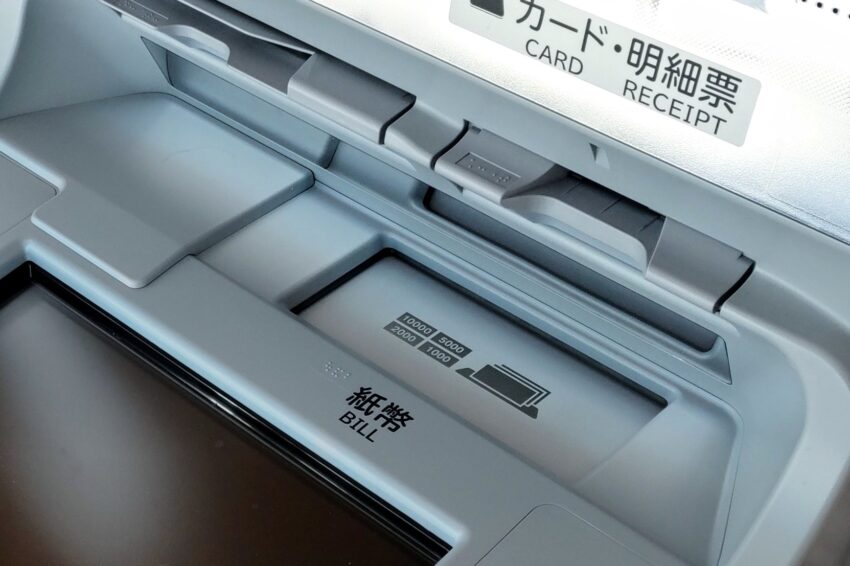
Top photo: 最後の旅人custom on PhotoAC
The “World” of Japan Post Bank ATMS
Banking in Japan can be rough. Want to set up a bank account when you don’t speak, let alone read, Japanese can be like playing ‘Elden Ring’; difficult, frustrating, infuriating but super gratifying when completed. However, the challenges don’t stop there. Want to use an atm? There’s an English option! But the moment you hit that English button, sometimes half to nearly all the options disappear. It’s not so bad if you just want to deposit or withdraw money, but what if you want to send money or update your phone number using the atm? Here’s some pointers to help.
Let’s start with the basics
Withdrawing and depositing money at an ATM is the most common use. The kanji for deposit is 預け入れ. Insert your card and next a PIN will be asked for before the desired amount of money you want to withdraw. If, like me, you are too lazy to keep tapping 0 when inputting 20,000. You can hit the 万 button instead. So 2 then 万 will get you 20,000円(yen). You can also use 千 to withdraw in just the thousands. So 5 then 千 will get you 5,000円(yen).
The kanji for withdraw is 引き出し. Again, insert your card and you will ask for a PIN to be entered. Then you can insert your money into the open slot. The machine will calculate and confirm the amount you have deposited. Once you confirm the amount, usually the screen will display an updated bank balance, or a receipt will be printed out.
If you wish to check your bank balance after a fun night out. Select 残高照会. You will need to enter your PIN and your balance will be displayed. Some ATMS will also give you the option to print out your bank balance. But perhaps you want your bank balance and recent transactions printed out, you can update your bank book by selecting 通帳記入 and then inserting your bank book into the now open bank book slot. The ATM will update your bank book before returning it to you.
Pretty easy, right? But what if you want to send money to the nice Nigeria Prince in the neighbouring prefecture?
Sending the dough
This one will vary depending on your bank, so this is based on using a JP Bank ATM. First you need to select remittance or ご送金 in kanji. Then, if you are sending to another bank, 他行口座へのご送金, a warning screen about fraudsters will appear so you can hit next or 次. Next you will be asked to insert your bank card or your bank book and for a PIN. Now this is the hardest part, finding the bank you are sending to. It’s best to go in with the kanji, katakana and romaji already written for this.
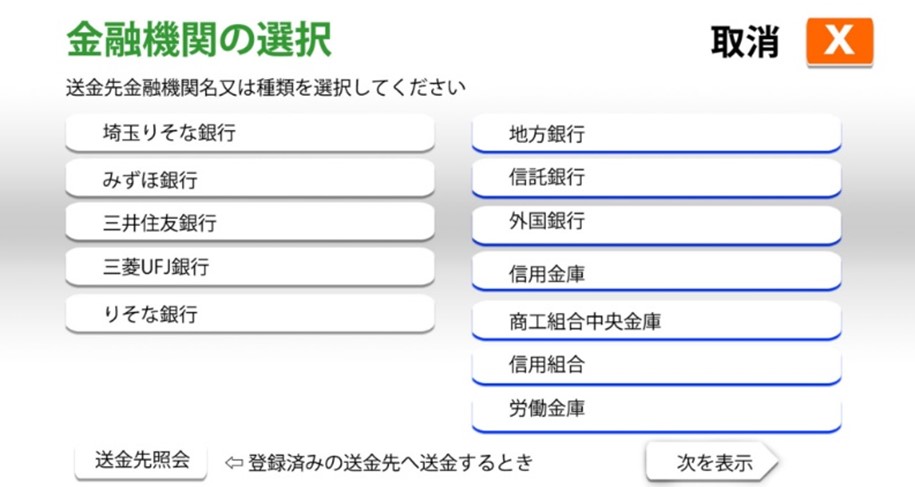
The common banks are on the left of the screen, the less popular are in the menu on the right. The right menu is as follows:
| 地方銀行 | Local bank |
| 信託銀行 | Trust Bank |
| 外国銀行 | Foreign Bank |
| 信用金庫 | Credit Union |
| 商工組合中央金庫 | Shoko Chunin Bank |
| 信用組合 | Credit Union |
| 労働金庫 | Labour Bank |
Once you have found the bank, you will need to find the branch using katakana. However, the branch name will probably in kanji or hiragana or a mixture of both. (Worse comes to worse, you can awkwardly as someone who is waiting to help you find the bank branch, I have done it a few times and most people understand. If there’s no one there to help, use the camera function on the google translate app. It’s a slow process, but it works.)
Next, we are hitting the easier part, you choose what type of bank account 普通預金 (ordinary), 当座預金 (checking), or 貯蓄預金 (saving) that the money is going to and then enter in an account number. Then the amount of money you want to send and you will have to confirm the amount by hitting 確認.
If you do notice a mistake, hit 訂正 (amend). You may also be asked to enter your name. Usually it’s already there and you just need to confirm by hitting はい. Insert your phone number and hit 確認 and then you’re good to go. You have sent money within Japan! There are plenty of videos on YouTube showing how to do this if you still feel unsure.
What else do these things do?
Sending money overseas is for another day, as we are focusing on using an ATM.
Some ATMS will let you update your personal details. Again, looking at JP Bank, it’s surprisingly easy when you know which menu to use. You need to select 暗証番号•引き出し上限額変更 and on the next screen 電話番号変更. Insert your card and enter your PIN. A screen showing your old phone will appear and you want to tap the 確認 button. The next screen will allow you to update to your new phone number, enter your new number and confirm with 確認.
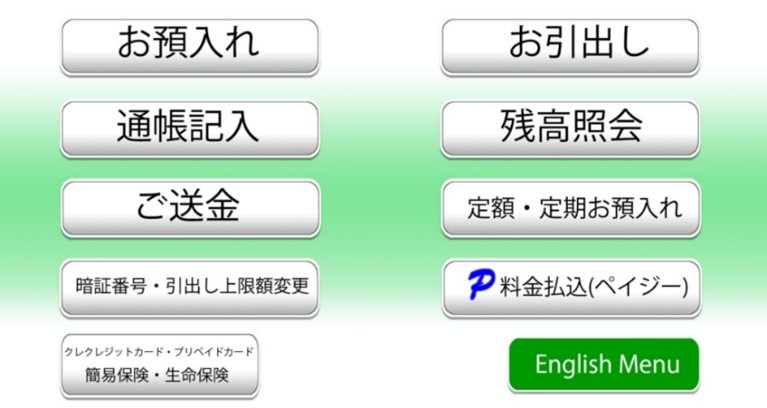
The next screen will again confirm both the old and new numbers. If you see a mistake you can tap 訂正 to amend any mistakes. If everything is ok, hit 確認 and the system will update your new phone number. The ATM will return your card and you can go enjoy the rest of your day. Unfortunately for JP Bank, if you need to change your address you will have to go to the counter with your new address on your residence card.
The 暗証番号•引き出し上限額変更 option will also let you change you PIN number. Instead of selecting 電話番号変更, select 暗証番号変更 instead. Then you will be asked to insert your bank card and then enter your current PIN number, after that you will be asked to enter a new PIN and to re-enter it to confirm it. The system will update to your new PIN and return your card.
Banking in Japan can be challenging but it doesn’t have to be a complete headache. There are videos on how to do the basics hidden in the algorithm of YouTube and plenty of websites that have all the different kanji translated. At least for now, I can access my money to buy all the Pokemon trading cards I want from my local Pokemon Center.
Photo Credits:
Top photo: 最後の旅人custom on PhotoAC
Additional Photos by Rushi Dai.
All other content (text) created by the original author and © 2023 MUSUBI by Borderlink
RELATED
-
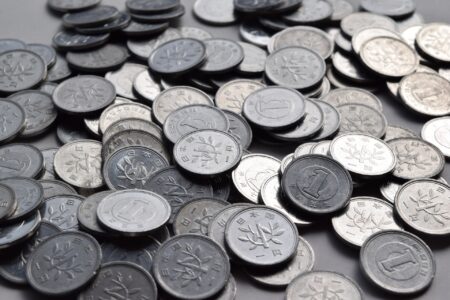
Don’t Throw Away Those One-Yen Coins!
Top photo: FRANK211さん on PhotoAC I studied abroad in Japan when I was in college, and when my studies conclude… -
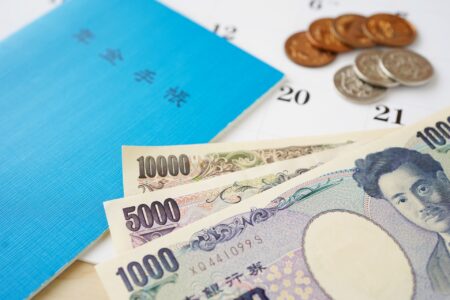
Japan’s Pension Explained (Part 1)
While life in Japan can be one full of adventure and excitement, there are also many responsibilities that new… -

Sell Stuff Online, Get Some Yen!
Top photo: craftbeermania on PhotoAC In these post-spring cleaning times, we may have stumbled items around ou…
PEOPLE

Rushi Dai
From Australia
Has experienced Japan for 2 years!


